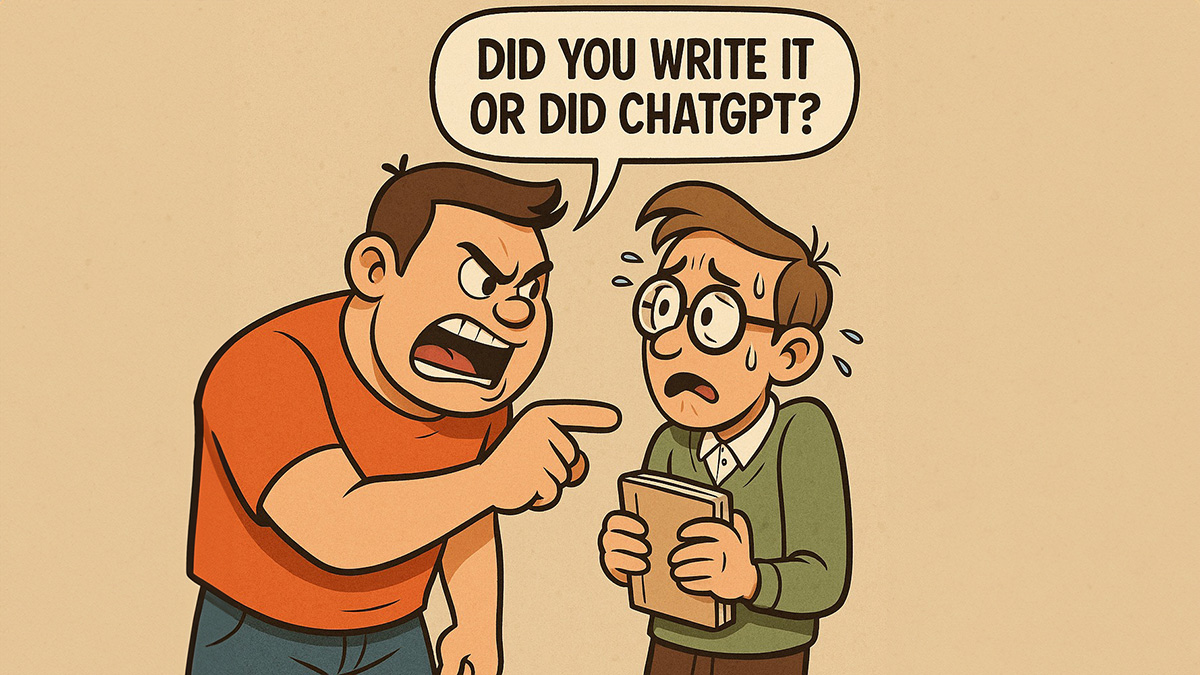I have known for at least eight years that creating content is a critical part of business development. I remember distinctly telling my operations manager that I needed to focus more of my time and energy on content creation. But did I do it? NO. And why not? Because writing content takes time and focus that I never seemed to have. In addition, like many of us, I wanted everything I produced to meet a certain standard, and meeting my own personal standard took even more time that I didn’t have. So despite knowing I needed to write and create to grow my business, I didn’t do it. If I wrote three blogs in a year, that was something.
Fast forward to 2024, when I discovered how I could use AI to accelerate the creative process, and I felt like I was shot out of a cannon in terms of content creation. All of a sudden, I could write blogs in my voice in minutes. These blogs weren’t just in my voice but also polished and ready to publish without long, drawn-out writing sessions and editing marathons. I could use AI to help me create engaging social media posts that resonated with my audience, as evidenced by engagement levels I had never seen. I had never been so productive as I was after discovering this amazing tool.
But is it just a tool? The thought of authenticity in utilizing AI had never even crossed my mind. That is, until after months of writing and creating with AI, I told a friend about a particular blog I had written, and he responded somewhat derisively: “Did you write it, or did ChatGPT?”
I have to admit I was taken aback, simply because it had never crossed my mind to add a caveat to my authorship. I came up with the idea, wrote the outline with ChatGPT, and used the custom project I had built in Claude to write the blog in my voice. Of course I had written the blog. But is that the whole truth?
So I did what any reasonable content creator does when he feels insulted — I made a Facebook post about it. I posted it in my favorite AI Facebook group, simply relaying what happened and my brief thoughts on the matter. Little did I know, my little post would set off a firestorm of debate. 306 likes and 158 comments later, I found myself at the center of one of the most contentious discussions in the modern creative landscape.
The Great Divide: Tool vs. Threat
What I discovered through this experience is that I had inadvertently stepped into what researchers call “the AI authenticity conundrum” — a fundamental debate that’s reshaping how we think about creativity, authorship, and the very nature of human expression in the digital age.
The debate essentially breaks down into two camps:
Camp 1: AI as an Empowering Tool
This perspective sees AI as simply the latest in a long line of technological innovations that have augmented human capabilities. Just as the typewriter didn’t author the novel, nor the camera take the photograph in isolation, AI doesn’t autonomously “create” but rather serves as an instrument under human direction. Proponents argue that the human user remains the ultimate author, leveraging AI to enhance efficiency, overcome creative blocks, and explore new artistic avenues.
From this viewpoint, authenticity resides in the human user’s genuine intent to create, with AI serving as a sophisticated means to realize that intent. The choreographer Wayne McGregor, for instance, collaborates with AI as an “evolving tool” that helps expand understanding of human experience, allowing him to curate, refine, and transform AI-generated sequences into unique performances.
Camp 2: AI as a Source of Inauthenticity
The opposing perspective views AI-generated content, particularly when its origins are obscured or misrepresented, as inherently inauthentic and potentially fraudulent. This view emphasizes that such content may lack genuine human intent, originality, and the experiential depth that characterizes authentic human creativity.
Critics worry about what they call the “devaluation of human skill.” This is the concern that AI might “offload the ‘needing skill’ component” of creative work, leading to an atrophy of human abilities and a homogenization of creative output. They point to research suggesting that extensive use of generative AI can lead to more “vanilla” ideas, reducing the diversity and originality of human creative expression.
The Legal and Ethical Landscape
The legal world is still catching up to these technological realities. Currently, U.S. copyright law maintains that protection extends only to “original works of authorship” created by humans. AI systems themselves cannot be recognized as authors for copyright purposes. However, this doesn’t preclude copyright protection for works created with the assistance of AI, provided there’s significant human creative input.*
This creates what lawyers call the “meaningful contribution” standard: the human contribution must be more than merely trivial and must involve original expression attributable to the human creator. It’s a spectrum rather than a simple binary, and the precise line between trivial modification and meaningful human contribution remains somewhat undefined.
Academic institutions are grappling with similar challenges, developing policies that typically emphasize transparency and require disclosure of AI use while holding students responsible for the accuracy and integrity of any AI-assisted work they submit.
The Critical Distinction: AI-Generated vs. AI-Assisted
One of the most important distinctions emerging from this debate is between “AI-generated” and “AI-assisted” content. AI-generated typically refers to content where an AI tool is responsible for creating the substantial elements, even if a human subsequently applies edits. AI-assisted describes scenarios where a human creates the content and then uses AI tools to edit, refine, or improve that human-authored work.
This distinction is fundamental for determining authorship, assigning responsibility, and ensuring compliance with evolving policies. But as AI tools become more sophisticated and integrated into creative workflows, this line is becoming increasingly blurred.
What This Means for Creators
The truth is, this debate touches on fundamental questions about human identity, creativity, and value in an age where machines can perform tasks previously considered uniquely human. As creators, we’re facing what researchers call the “creative double bind” — a simultaneous desire to utilize powerful AI tools alongside a fear that these same tools might diminish our role and economic standing.
Looking forward, the impact on creative industries will likely be less about mass job displacement and more about a significant redefinition of roles and required skill sets. Value will increasingly accrue to those who can develop AI literacy, collaborate effectively with intelligent systems, and strategically incorporate them into the creative process, while maintaining the uniquely human elements that AI cannot replicate: emotional intelligence, cultural nuance, personal storytelling, and authentic lived experience.
My Take: Embracing Nuance in a Binary World
After being thrust into this debate and diving deep into the research and arguments on both sides, here’s where I’ve landed: The question isn’t whether AI is a tool or a threat, it’s how we use it responsibly and transparently.
I still believe that when I use AI to help craft my thoughts into polished prose, I am the author. The ideas, the perspective, the voice — that’s all me. AI helps me overcome the technical barriers that previously prevented me from sharing my expertise with the world. It’s like having a really good editor who never gets tired and is available 24/7.
But I also recognize the importance of transparency. Moving forward, I’m committed to being clear about my process when it’s relevant. Not because I’m ashamed of using AI, but because honesty builds trust, and trust is the foundation of any meaningful relationship with an audience.
The reality is that AI isn’t going away. It’s becoming more sophisticated, more integrated into our workflows, and more capable every day. The question isn’t whether we should use it, but how we can use it in ways that enhance rather than diminish human creativity and authentic expression.
As this technology continues to evolve, so too will our understanding of authenticity, authorship, and creativity itself. What remains constant is the need for honest dialogue, transparent practices, and a commitment to using these powerful tools in service of genuine human expression rather than as a replacement for it.
After all, at the end of the day, it’s not the tool that makes the creator — it’s how the creator uses the tool to bring their unique vision to life.
Editor’s note: See https://www.copyright.gov/newsnet/2025/1060.html for Part 2 of the US Copyright Office’s Artificial Intelligence Report.


